-
Car Reviews
- Car News
-
Car Comparisons
Latest comparisons
- Chasing Deals
As the new kingpin of the Peugeot 308 range in Australia, does the PHEV do enough to justify its $16,000 premium over the equivalent non-hybrid models?
Though it isn’t as much of a household name as BMW’s 3-badged car, Peugeot’s long-running 300 series is arguably just as iconic, with the very first model (the 301) being launched back in 1932.
Fast forward 91 years, and the modern-day 300 Series – now called the Peugeot 308 – has grown in size, price, and popularity, with the third-generation of the 308 hatchback and wagon being introduced to the Australian market late last year.
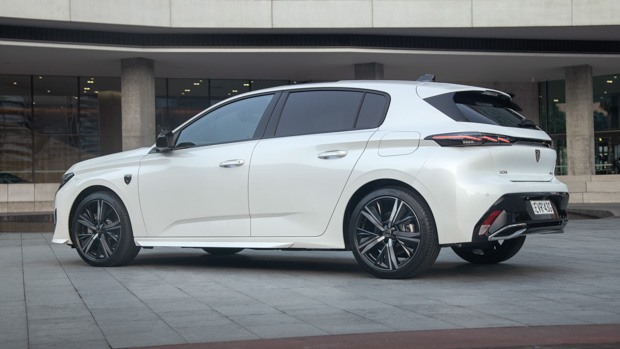
Currently, Peugeot offers three variants of the 308 hatch in Australia, along with a single wagon form. At the top of the range is the 308 GT Sport plug-in hybrid, which starts from $64,990 before on-road costs.
For now, the 308 plug-in hybrid is being offered only as a hatch in Australia. There’s no PHEV wagon on offer locally, though Peugeot is understood to be considering adding the fully-electric E-308 hatch and wagon to its Australian dealerships.
As a compact, plug-in hybrid hatchback, this 308 GT Sport PHEV sits in a small niche in the Australian market – something that’s likely to change with the introduction of more electrified models in time.
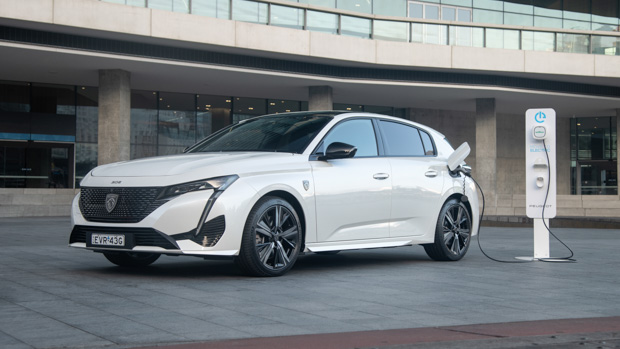
There are really only two other vehicles that the Peugeot faces competition from in this segment, one being the Cupra Leon VZe at $59,990, and the other being the Mercedes-Benz A250e at $68,989, both before on road costs are added.
The segment could get a shake-up in future with Volkswagen closely considering bringing the sporty, plug-in hybrid Golf GTE hot hatch to Australian shores.
Sitting smack bang in the middle of its competition in this niche segment, Peugeot promises that the 308 GT PHEV manages to combine sporty driving dynamics, reasonably high performance, 60km of all-electric range, and frugal fuel consumption when the petrol engine needs to be engaged.
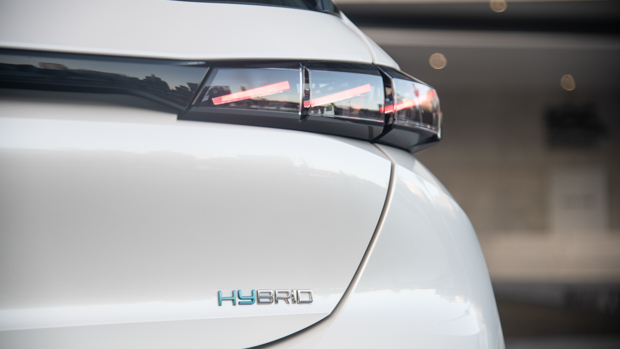
Despite sitting comfortably in the price range of its competitors, the 308 PHEV commands a very significant price premium over the top-end non-hybrid 308 hatch – the $16,000-cheaper GT Premium, with which the PHEV shares much of its equipment list.
So with just the added bonus of emission-free electric mobility, does this 308 GT Sport plug-in hybrid do enough to justify the five-figure premium that buyers will have to fork out over the standard petrol model?
In Australia, the Peugeot 308 range starts with the GT hatch at $43,990 before on-road costs.
It’s powered by a 1.2-litre turbo-petrol engine that makes 96kW and 230Nm of torque. This is sent exclusively to the front wheels through an eight-speed automatic transmission.
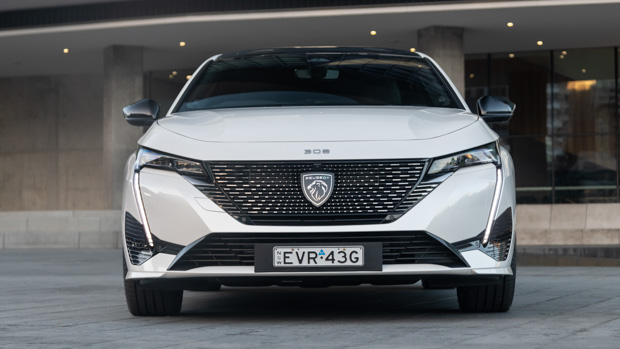
This engine and transmission package is offered as standard across all hatch and wagon variants, barring the range-topping plug-in hybrid hatch.
Standard equipment on the exterior of the entry-level hatch includes power folding mirrors, LED matrix headlights, and 18-inch alloy wheels.
Moving inside, there’s Alcantara-accented faux-leather upholstery, manually-adjustable seats with lumbar support, and a wireless phone charging pad.
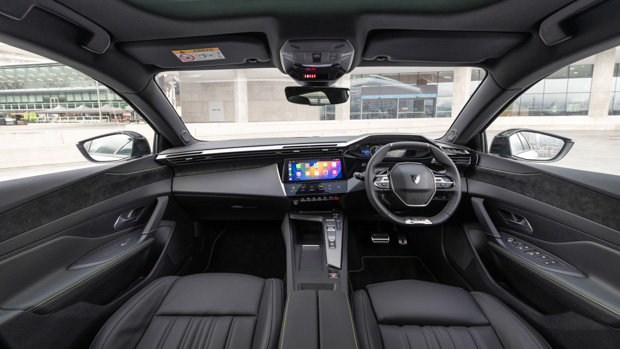
Moving up to the middle-rung 308 GT Premium grade will set buyers back $48,990 for the hatch, and $50,490 for the sole wagon variant of the Australian 308 lineup.
Specification level is almost identical across both GT Premium hatch and wagon variants, with 18-inch black alloy wheels being the main difference between the two.
On the inside, the GT Premium increases the luxury factor with a panoramic sunroof, electric seats with a massaging function, nappa leather interior, and a 10-speaker premium audio system.
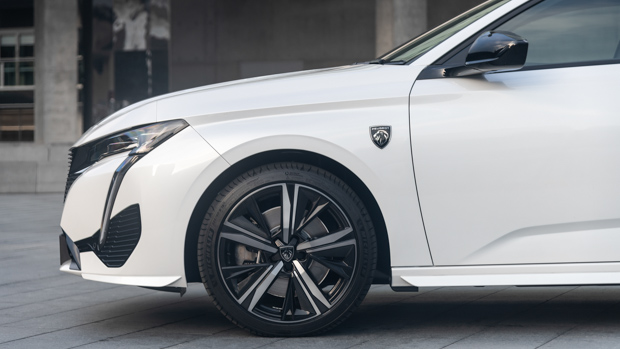
Representing the flagship variant in the 308 GT range is the GT Sport plug-in hybrid hatch at $64,990 before on-road costs.
The majority of the standard inclusions carry over from the GT Premium here, with the addition of some hybrid badging around the exterior of the car.
As you’d expect, things are quite different beneath the bonnet here, with the PHEV making use of a larger 1.6-litre turbo-petrol engine with 132kW/250Nm on offer.
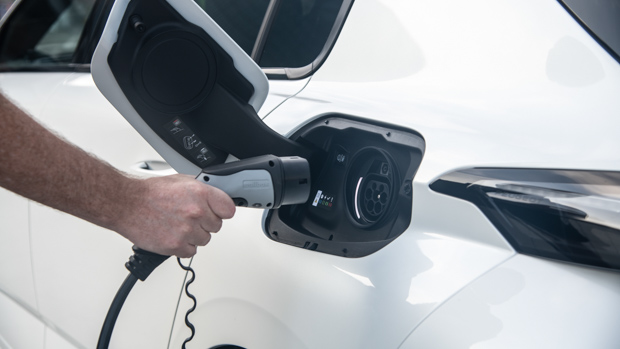
This engine is paired with a single electric motor on the front axle which is good for an extra 81kW and 320Nm of torque. All up, the combined output of both sources is 165kW and 360Nm.
Like the standard 308, the PHEV is exclusively front-wheel drive, and it makes use of the same eight-speed automatic transmission.
On the road, the 308 PHEV is a peach to drive. It is quiet and refined, but the hybrid Peugeot packs so much grunt that it borders on hot hatch territory. It’s warm, at the very least.
This is reflected in the 0-100km/h time of 7.5-seconds that Peugeot quotes. It puts the 308 PHEV on par with the 508 Sportswagon that managed a time of 7.6-seconds during independent testing.
Certainly, the 308 plug-in hybrid is considerably peppier than the non-hybrid version of this car.
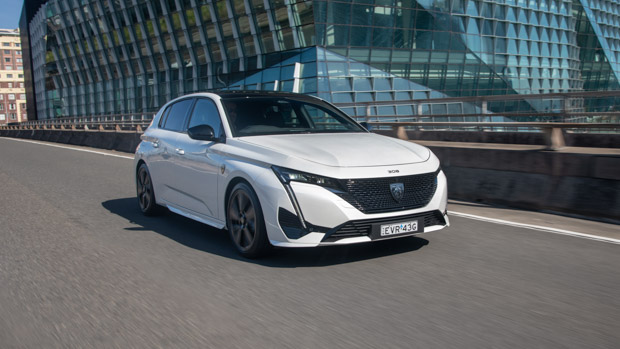
Chasing Cars has independently tested the 0-100km/h performance of the 1.2-litre 308 GT Premium wagon, which returned a leisurely time of 9.48 seconds.
We’ll be testing the true 0-100km/h time of the 308 PHEV later this week and will update the copy of this review with the result.
Though the performance doesn’t match something like a Volkswagen Golf GTI with its theatre, the instant torque provided by the 308’s electric motor gives an impressive shove off the line, and is more than enough to have the front tyres scrambling for traction.
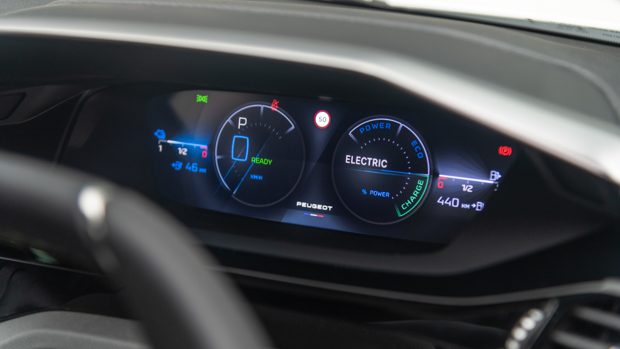
It’s also worth noting that this performance varies depending on the drive mode that’s selected. Hybrid, electric, and sport are the three offered here.
Electric mode does exactly what you’d expect it to, using up the charge stored in the 12.4kWh battery before even thinking about turning to petrol power.
Hybrid mode acts in a similar fashion, but it seems to prioritise electric power in low-speed driving scenarios before the engine sparks into action to assist with heavy acceleration and highway speeds.
I found the sport driving mode to be the most interesting to use, considering that it doesn’t rely as heavily on the petrol engine as other hybrids do when prioritising performance.
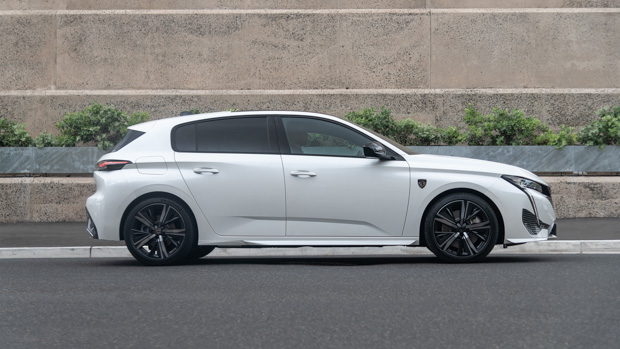
In sport mode, the accelerator response is noticeably sharper, and while the engine will kick in to assist the electric motor with heavier bouts of throttle, the majority of your progress seems to be provided by the electric motor.
In saying this, it’s not the same electric shunt that we’ve come to expect from fully-electric vehicles – the similarly-priced Tesla Model 3 and the like – but the 308 hybrid mimics the linear acceleration curve of a traditional ICE-powered vehicle.
As far as ride quality goes, the 308 PHEV is fit for its purpose as a moderately sporty hatchback – but it’s nothing to shout about from the rooftops.
During the drive program on the local launch, we got the opportunity to sample the 308 on a number of different surfaces. I didn’t experience any bad movement, but the ride was a little clunky at times over the patchy concrete road base that Sydney’s northern beaches offers up.
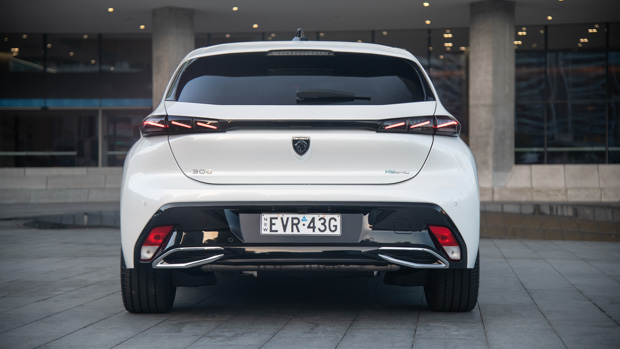
Considering that the 308’s rear end sits on a torsion-beam axle, this doesn’t come as a massive surprise, but it can feel a little low rent in a car that is otherwise as refined (and expensive) as this 308 PHEV.
Though the 308 PHEV is reasonably small in dimensions (4365mm long, 1852mm wide), all the electric technology that it carries around has made it quite porky at over 1.6-tonnes.
This hefty figure is offset by the impressive amount of torque provided by the electric motor, but it’s in the corners that drivers will begin to notice it.
I’m not saying that the 308 has lost its agility in PHEV form, because it is still a very fun car to corner with, but those who like to push the boundaries of traction will have to adapt their driving style.
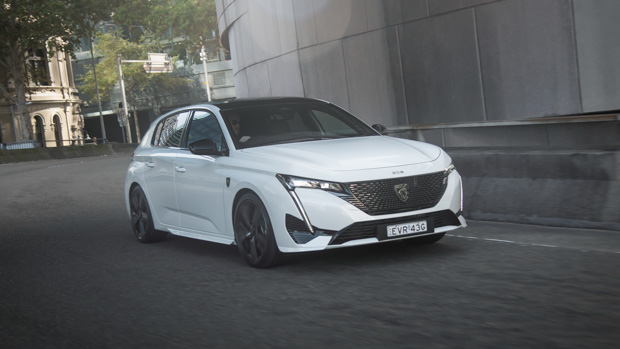
The steering feel is a little vague in the 308, with not a lot of communication making its way back up the column. This is a shame in my eyes, as the comically small steering wheel should be like a little racing wheel to use in my eyes.
It’s clear that Peugeot has priotised comfort over driving dynamics with this 308 PHEV, and that’s perfectly forgivable, considering to whom the vehicle it aimed towards.
It’s refined, the petrol engine is quiet when it kicks in, and it has still retained some driving enjoyment.
As the 308 PHEV shares its interior with the GT Premium, it gets a generous helping of premium materials on the inside.
Technically, Peugeot calls it “Nappa ‘Mistral’ full grain leather seat trim with ‘Tramontane’ charcoal grey top stitch”. Translation? It’san impressive combination of soft nappa leather with alcantara-look panelling.
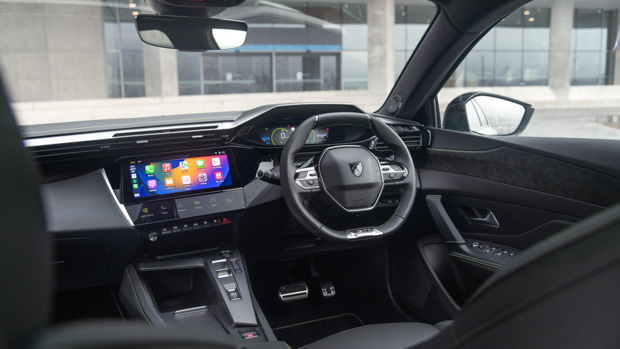
As is seemingly always the case with modern Peugeots, the layout of the cabin is a unusual, with the small steering wheel sitting beneath the digital gauge cluster – but it’s all very impressive to look at.
This “3D” digital gauge cluster measures 10.0 inches in size, and is flanked by an infotainment screen of the same size. Unfortunately a head-up display is an option in the 308 range, something that Peugeot justifies by claiming that the cluster sits high enough already.
Wireless Apple CarPlay and Android Auto are both standard features in the infotainment system, as is in-built satellite navigation.
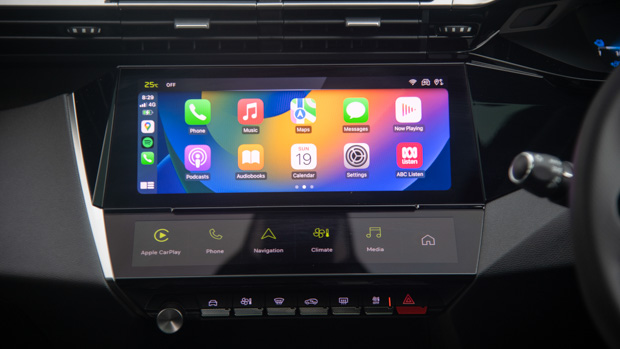
It’s worth noting that Peugeot’s nav system is actually very easy to use, and in some cases, easier to work on the move than either Apple or Google Maps.
Beneath the infotainment screen sits a touch panel that drivers can use to navigate between the different screen functions. While this looks impressive, and is a significant upgrade on the strange piano keys in the 508, greasy fingerprints mark this panel very easily.
Getting into a comfortable and natural driving position is another issue I have encountered with a number of Peugeot’s cars now, and the 308 is no exception for me.
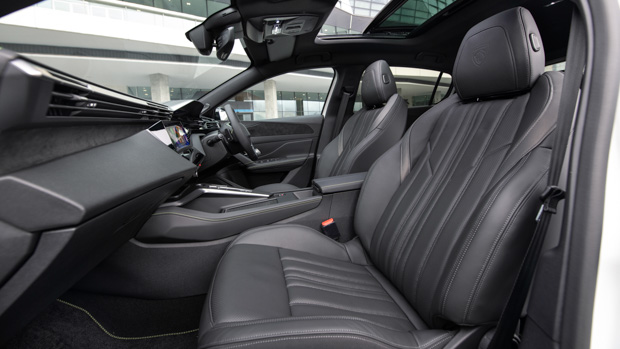
The seating position has to be quite high in order to see the digital cluster, but then I find my knees are hard up against the wheel. I’m sure this isn’t the case for all drivers, but it’s something I struggle with.
Second row space in the 308 PHEV adequate for a hatchback. There’s not a heap of leg room on offer, but two adults will fit in reasonable comfort back there. The raised transmission tunnel will have middle seat passengers in a bit of a squeeze, though.
As expected, cargo space in the PHEV is down on what’s offered through the rest of the range, due to the 12.4kWh battery that sits beneath the boot.
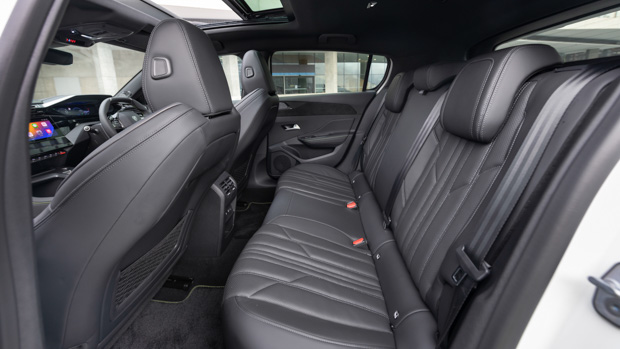
The regular 308 GT gets the biggest boot of the bunch, offering 412-litres, a subwoofer brings this figure down to 384-litres in the GT Premium hatch, and the PHEV offers just 361-litres with both the sub and the battery in the way.
It’s also worth noting that every 308 forgoes a spare tyre of any sort, in favour of a tyre inflation kit.
Peugeot’s full suite of active safety assistance systems come standard with the 308 PHEV. This includes adaptive cruise control, active lane centering, blind spot monitoring among others.
I found the 308’s systems to be tuned quite well for use on Australian roads, with assistance being offered rather than forced upon drivers.
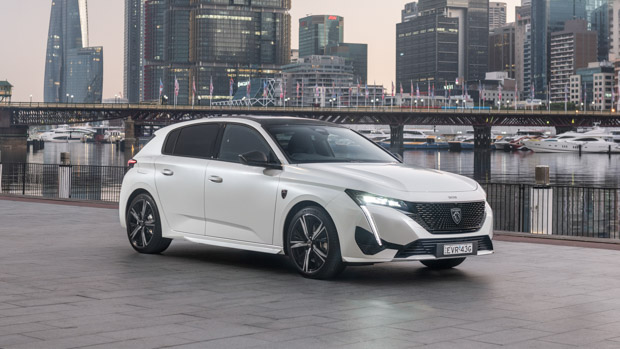
I’m especially fond of the speed limit sign recognition system that detects the current speed limit, and drivers simply have to double tap the ‘OK’ button on the steering wheel to set the system to the posted speed.
As for an official rating, the 308 PHEV is yet to be tested by ANCAP, but the regular ICE-powered model received a four-star rating when it was tested last year.
It scored 79 percent in adult occupant protection, 86 percent in child occupant protection, 68 percent in vulnerable road user protection, and 82 percent in safety assist.
As a plug-in hybrid, this 308 is exceptionally fuel efficient. During the launch drive, which featured a combination of city, backroad and highway driving, we ended up with a figure of just 1.2L/100km.
That astonishingly frugal figure was returned because we started with a fully-charged battery, which is key to extracting most of the benefits that PHEVs promise.
Though our result lines up with Peugeot’s claim of just 1.3L/100km in the combined cycle, if you run the 308 PHEV with a ‘flat’ battery you’ll consume much more petrol – but it’s still likely to be more economical than the standard non-hybrid model.

In terms of electric range, the 308 PHEV can drive up to 60km according to WLTP testing, which is an impressive figure for a vehicle of its size.
As for servicing, Peugoet’s pre-paid plan will set 308 PHEV owners back just $2000 to cover the vehicle for five years or up to 100,000km. This is with intervals every 20,000km/12 months.
On the warranty front, the 308 is covered by Peugeot Australia’s five-year/unlimited kilometre plan. The PHEV is also covered by an eight-year/160,000km battery warranty.
If what you are after is a small, frugal plug-in hybrid with solid performance and a pleasant interior, then there is no denying that Peugeot has hit the nail on the head with the $70K-driveaway 308 GT Sport.
This electrified hatchback is fun to drive, it’s well refined, and it’s comfortable. Three things that make something like this a perfect candidate for a daily driver.
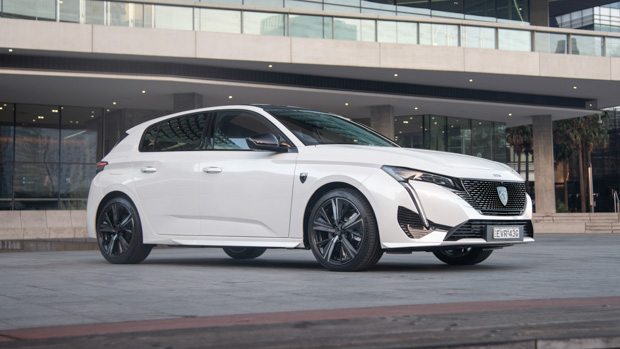
With 60km of electric range on offer, most Australians will be able to complete their commute to and from work without using a drop of petrol – something that will save serious dosh in the long run.
But speaking of the long run, it will take a very long time to work off the extra $16,000 that buyers have to fork out for this model over the equivalent 308 GT Premium.
With a similar fit-out on the inside and around 100 less Newton-metres on offer, I’d struggle to see the $16,000 benefit in the PHEV over the 308 GT Premium.
For those that are not ready to take the plunge into full electrification, this premium PHEV could make sense. But it’s also worth considering that a full-EV like the Tesla Model 3 RWD costs the same $70,000-driveaway as the hybrid Peugeot – and the $67,000 on-road Polestar 2 is even cheaper.
About Chasing cars
Chasing Cars reviews are 100% independent.
Because we are powered by Budget Direct Insurance, we don’t receive advertising or sales revenue from car manufacturers.
We’re truly independent – giving you Australia’s best car reviews.
The estimate provided does not take into account your personal circumstances but is intended to give a general indication of the cost of insurance, in order to obtain a complete quote, please visit www.budgetdirect.com.au. Estimate includes 15%^ online discount.
^Conditions Apply
Budget Direct Insurance arranged by Auto & General Services Pty Ltd ACN 003 617 909(AGS) AFSL 241 411, for and on behalf of the insurer, Auto & General Insurance Company Limited(ABN 42 111 586 353, AFSL 285 571).Because we don’t know your financial needs, we can’t advise you if this insurance will suit you. You should consider your needs and the Product Disclosure Statement before making a decision to buy insurance. Terms and conditions apply.
Indicative quote based on assumptions including postcode , 40 year old male with no offences, licence suspensions or claims in the last 5 years, a NCD Rating 1 and no younger drivers listed. White car, driven up to 10,000kms a year, unfinanced, with no modifications, factory options and/or non-standard accessories, private use only and garaged at night.
^Online Discounts Terms & Conditions
1. Discounts apply to the premium paid for a new Budget Direct Gold Comprehensive Car Insurance, Third Party Property Only or Third Party Property, Fire & Theft Insurance policy initiated online on or after 29 March 2017. Discounts do not apply to optional Roadside Assistance.
2. Discounts do not apply to any renewal offer of insurance.
3. Discounts only apply to the insurance portion of the premium. Discounts are applied before government charges, taxes, levies and fees, including instalment processing fees (as applicable). The full extent of discounts may therefore be impacted.
4. We reserve the right to change the offer without notice.